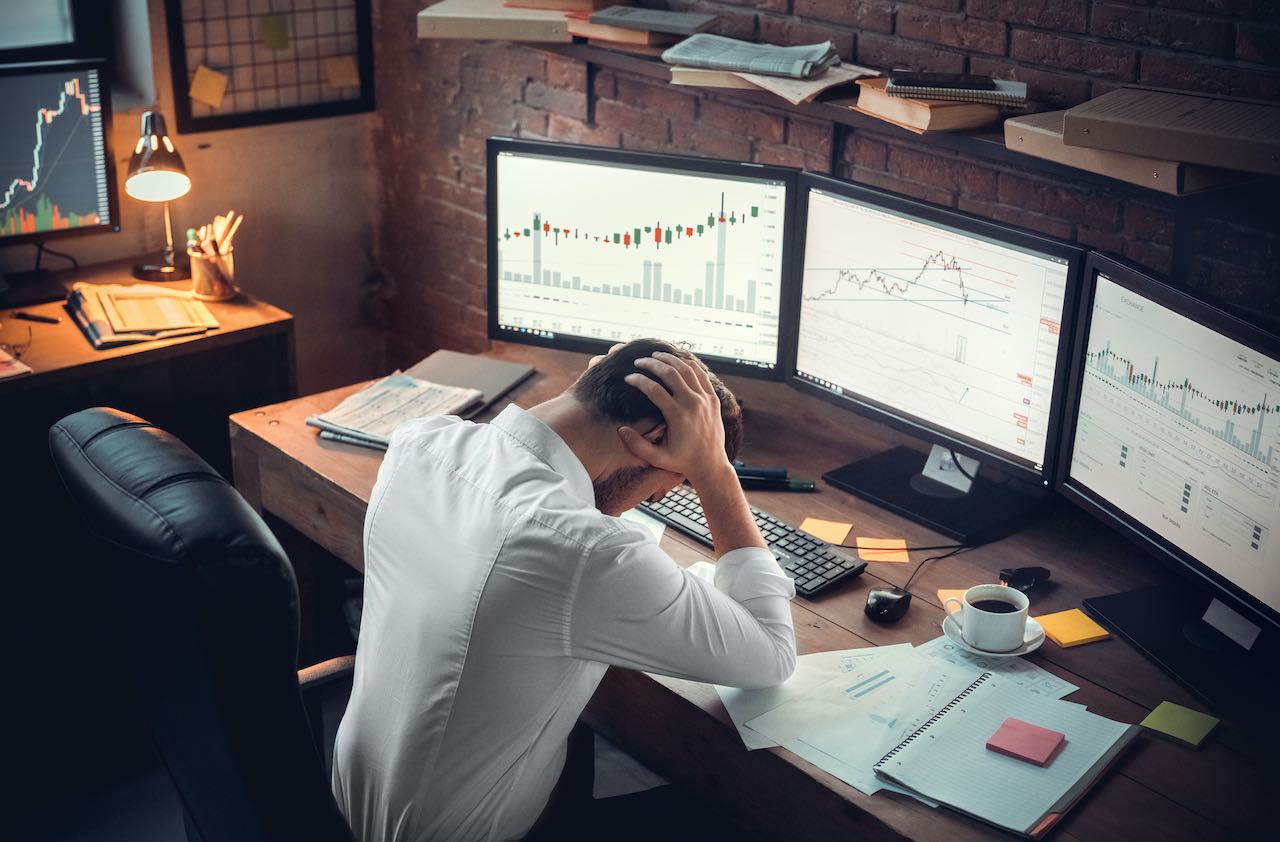Bridgeway Bounces Back
After a lousy 2006, Bridgeway Aggressive Investors 2 is once again leaving competitors in the dust. But stay away unless you're willing to tolerate this terrific fund's ups and downs.

What upsets John Montgomery isn't the rotten performance of virtually all the Bridgeway funds last year. His Bridgeway Aggressive Investors 2 (BRAIX) returned a mere 5%, trailing Standard & Poor's 500-stock index by ten percentage points.
What frustrates him is that "people bailed at the wrong time. They sold in the fourth quarter of last year and the first quarter of this year. That just drives me nuts. We have to do a better job of educating our shareholders."
Aggressive Investors 2 still has a stunning record. Over the past five years through April 25, it has returned an annualized 13% -- five percentage points better than the S&P 500. Over the past ten years, older brother Bridgeway Aggressive Investors 1 (BRAGX) has returned an annualized 19% -- 11 percentage points more than the S&P. That puts it in the top ten among all funds over that period.
From just $107.88 $24.99 for Kiplinger Personal Finance
Be a smarter, better informed investor.

Sign up for Kiplinger’s Free Newsletters
Profit and prosper with the best of expert advice on investing, taxes, retirement, personal finance and more - straight to your e-mail.
Profit and prosper with the best of expert advice - straight to your e-mail.
So you can't fault Montgomery for professing to be unconcerned by last year's slump. "It's just a data point," says Montgomery, who uses computer models to pick stocks. "But it's not any richer than any other data point."
The average dollar invested in Aggressive Investors 2 gained only one-half of one percentage point last year, according to Morningstar. That's because people shoveled money in and pulled money out at the wrong times.
Those who sold regret it. Aggressive Investors 2 has soared this year. It's up 13% so far.
The lesson: Don't invest in this fund unless you have the stomach to stick out the inevitable bad patches. The fund is extremely volatile -- roughly three times as volatile as the S&P. That means its month-to-month and year-to-year returns will almost certainly continue to bounce around a whole lot.
"We could design a fund to minimize the probability of lagging the index in a year, and we've talked about doing that," says the Houston-based Montgomery. "But this fund is about making a lot of money over the long term. We might have three poor years out of ten relative to the market, and it wouldn't bother me at all."
To be sure, Montgomery says, the computer models that power the fund are "strongly tweaked" to lag the indexes in bull markets rather than bear markets. The fund held up quite well in the 2000-02 bear market. But, of course, that's no guarantee of how it will do in the next bear market.
What makes it harder to stick with Montgomery when he's trailing is that he's secretive about what goes into his computer models. To Montgomery, who has been managing money since 1993, making his models public would be giving away the store.
It's hard to blame him. And there's a benefit to his secrecy: Because of it, institutional investors shy away from his funds. Consequently, Montgomery and his four analysts are managing only $5.6 billion, which enables the funds to profit from investing in stocks of smaller companies.
Aggressive Investors 1 and Aggressive Investors 2 have the broadest mandates of the Bridgeway funds. Aggressive Investors 1 is closed to new investors, so Aggressive Investors 2 is easily the best pick among his open funds. Under new prospectus language, Aggressive Investors 2 won't buy some of the tiniest stocks that Aggressive Investors 1 does. That could hurt performance, but the fund is still attractive. Other than that, the two funds are near clones.
Aggressive Investors 2 covers essentially the entire stock market. Although the stocks it owns tend to be somewhat growthy on balance, the fund owns a lot of bargain-priced stocks, too. It also own small, midsize and large-size companies. "We've got all the real estate covered," Montgomery says.
Six computer models operate independently to pick stocks for the fund. Part of the fund is apportioned to each model. The allocations fluctuate depending upon how appealing each model's stocks look in terms of return and risk.
One model is technical -- that is, it looks at statistics about how stocks have behaved. A second looks for growing companies selling at reasonable prices. A third hunts for large, cheaply priced companies. And the other three all look primarily for stocks with good growth characteristics.
According to its year-end report, the latest available, Aggressive Investors 2 had nearly one-third of assets in energy and industrial materials. But Montgomery says there was no one factor that led to last year's meltdown. All but one of the computer models picked stocks that lagged the S&P, he said.
Montgomery and his colleagues constantly look for better ways to program their computers. The models they employ focus on the financial statements companies spit out, as well as other statistics. "I know some statistical things about companies, but mostly I think in ticker symbols, not stocks," Montgomery says.
How to use this high-octane fund? In moderation. I'm not daring enough anymore to make this first-class fund a huge part of a portfolio. But as 10% or 15% of your stock funds it can potentially boost returns handsomely.
Steven T. Goldberg is an investment adviser and freelance writer.
Profit and prosper with the best of Kiplinger's advice on investing, taxes, retirement, personal finance and much more. Delivered daily. Enter your email in the box and click Sign Me Up.

-
 The Original Property Tax Hack: Avoiding The ‘Window Tax’
The Original Property Tax Hack: Avoiding The ‘Window Tax’Property Taxes Here’s how homeowners can challenge their home assessment and potentially reduce their property taxes — with a little lesson from history.
-
 Is Mint Mobile's Home Internet a Game-Changer or Just Another Option?
Is Mint Mobile's Home Internet a Game-Changer or Just Another Option?Mint Mobile recently unveiled its new home internet service. We break down how it works so you can determine if it's a great value for your needs.
-
 ESG Gives Russia the Cold Shoulder, Too
ESG Gives Russia the Cold Shoulder, TooESG MSCI jumped on the Russia dogpile this week, reducing the country's ESG government rating to the lowest possible level.
-
 Morningstar Fund Ratings Adopt a Stricter Curve
Morningstar Fund Ratings Adopt a Stricter Curveinvesting Morningstar is in the middle of revamping its fund analysts' methodology. Can they beat the indices?
-
 Market Timing: The Importance of Doing Nothing
Market Timing: The Importance of Doing NothingInvestor Psychology Investors, as a whole, actually earn less than the funds that they invest in. Here’s how to avoid that fate.
-
 Commission-Free Trades: A Bad Deal for Investors
Commission-Free Trades: A Bad Deal for Investorsinvesting Four of the biggest online brokers just cut their commissions to $0 per transaction. Be careful, or you could be a big loser.
-
 Vanguard Dividend Growth Reopens. Enter at Will.
Vanguard Dividend Growth Reopens. Enter at Will.investing Why you should consider investing in this terrific fund now.
-
 Health Care Stocks: Buy Them While They're Down
Health Care Stocks: Buy Them While They're Downinvesting Why this sector should outperform for years to come
-
 Buy Marijuana Stocks Now? You'd Have to Be Stoned.
Buy Marijuana Stocks Now? You'd Have to Be Stoned.stocks Don't let your investment dollars go to pot
-
 4 Valuable Lessons From the 10-Year Bull Market
4 Valuable Lessons From the 10-Year Bull MarketInvestor Psychology Anything can happen next, so you must be mentally prepared.